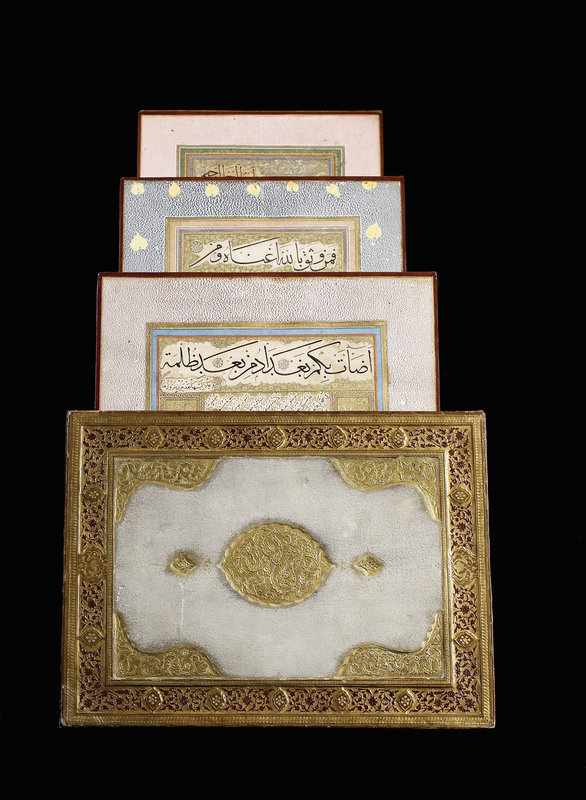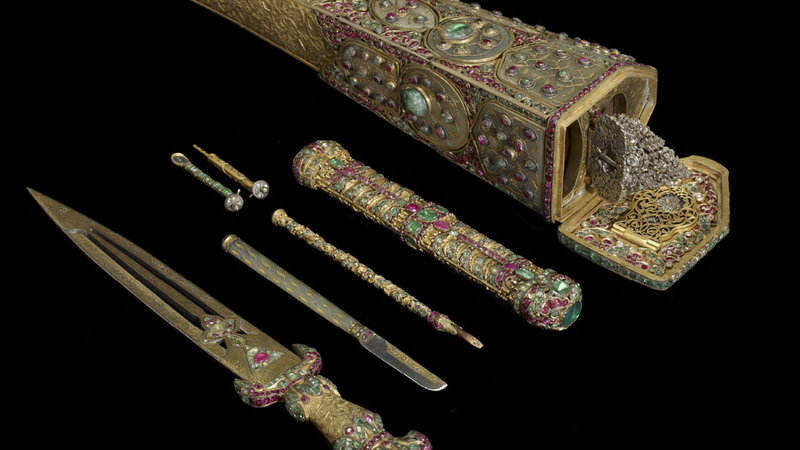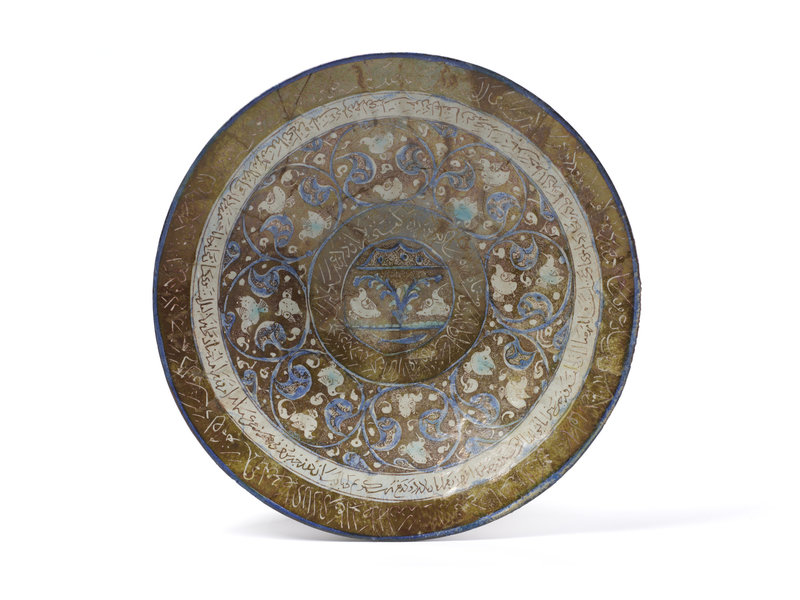Landmark exhibition of Asian and Islamic works opens at the Walters Art Museum
BALTIMORE, MD.- This spring, the Walters Art Museum debuts Across Asia: Arts of Asia and the Islamic World. The exhibition features over 600 works of art spanning 5,000 years and marks the first time in the museum’s history that its core Asian and Islamic art collections are on view together. Across Asia highlights the connections among art, cultures, religions, and ideas across the vast geography of Asia, and includes examples of architecture, calligraphy, ceramics, cloisonné, enamelwork, lacquerware, manuscripts, metalwork, painting, sculpture, and textiles.
“Arts from the Asian continent and the Islamic world have held places of pride at the Walters since the earliest days of its opening to the public. Across Asia: Arts of Asia and the Islamic World uses the unique breadth of the Walters collection to tell stories that are as distinctive as they are compelling,” said Julia Marciari-Alexander, Andrea B. and John H. Laporte Director. “After a multi-year renovation project, Across Asia showcases the continent’s artistic and cultural exchanges with Europe, Africa, and beyond, and, in turn, creates a holistic view of the collections.”
Visitors will see some of the most popular works in the museum, as well as many works which have previously not been on view, including a 19th-century Buddhist pulpit (thammat) from Thailand. One of the only known Thai pulpits in a U.S. museum, the thammat will be on view for the first time after undergoing extensive treatment in the Walters’ conservation lab, supported by a grant from the Carter Foundation.
“One thing that was very important for us in this exhibition was to highlight how each of these cultures has forms and styles of art that may differ from their neighbors,” said Adriana Proser, Mr. and Mrs. Thomas Quincy Scott Curator of Asian Art. “At the same time, ours has been a conscious effort to break down some long-standing misconceptions of the artistic traditions of Asia and the Islamic world and to tell stories that are more culturally nuanced than the Euro-centric binary of ‘the East’ and ‘the West.’ Over time none of the cultures represented in the galleries existed in a vacuum. Intense periods of trade, geographic expansion, and spread of religion long developed within this vast region and many works of art in the galleries carry past interactions in their aesthetic DNA.”
Encompassing the entirety of the museum’s fourth floor, the galleries are arranged to span the continent of Asia, from Japan in the East to Anatolia in the West. A large mural of a map of Asia at the entrance of the exhibition provides geographic context, prompting visitors to rethink their understanding of the continent and the diverse cultures therein.
“Across Asia showcases the strengths of the Walters’ Asian art collections, but we place particular emphasis on the traditions these objects represent,” said Dany Chan, Associate Curator of Asian Art. “For the East Asia galleries, it means foregrounding the stories primarily in China’s Qing dynasty and Japan’s Meiji period. We focus, for example, on the exchanges of ‘blue-and-white’ ceramics among East Asia, Southeast Asia, the Islamic world, and Europe during the 16th and 17th centuries.”
East Asia
In the East Asia galleries, visitors will encounter sculpture, metalwork, jades, paintings, textiles, and, notably, ceramics made during China’s last imperial dynasty, the Qing dynasty (1644– 1911), as well as art from the Meiji period of Japan (1868–1912)—which makes up a large portion of the Walters’ Japanese art collection—and Korean bronzes and ceramics, particularly those made during the Goryeo dynasty (918–1392) and the Joseon dynasty (1392–1910).
The galleries are organized around themes of literacy and learning, pastimes, adornment, stimulants, world views, the natural world, rites and rituals, death and the afterlife, and trade and exchanges. The galleries also include Islamic, European, and contemporary works.
Buddha, China, ca. 590, Sui dynasty. Wood with lacquer, gilding, and paint. Acquired by Henry Walters, 1920 © The Walters Art Museum.
Chinese (Artist), Covered Bowl, 19th century. Porcelain with enamels and gold (lai nam thong), 15 x 21.5 cm. Gift of the Doris Duke Charitable Foundation's Southeast Asian Art Collection, 2002, 49.2798. © The Walters Art Museum.
Ogawa Shomin (Japanese, 1847-1891), Box for Writing Tools (Suzuribako), Japan, late 19th century (Meiji), lacquer, gold, mother-of-pearl, and silver. Acquired by Henry Walters, 1906, 67.162. © The Walters Art Museum.
Namikawa Sosuke (Japanese, 1847-1910), Bowl with Chrysanthemum Blossoms, ca. 1900 (Meiji), Translucent cloisonné enamel and silver, Acquired by Henry Walters, 1900, 44.546. © The Walters Art Museum.
Yoshida Homei (Japanese, 1875 - 1943), Arayori (A Peasant Woman), Japan, Tokyo, ca. 1915 (Taisho), wood with applied color. Acquired by Henry Walters, 1915, 25.2. © The Walters Art Museum.
South and Southeast Asia
The galleries of South Asia and Southeast Asia present objects and information about the cultural interactions and exchanges by land and sea in the evolution of Hindu and Buddhist sculpture, architecture, and painting across these regions.
Visitors will witness how representations of images of the Buddha and Bodhisattvas both remain the same and change across arts of South and Southeast Asia and arts of East Asia. In particular, a case in the Southeast Asia galleries provides a broad context for understanding Bodhisattvas, while the Bodhisattva Avalokiteshvara is explored in depth in the East Asian gallery. Similarly, a case of South Asia Islamic arts demonstrates for visitors how local techniques and styles impacted the aesthetics of the arts of Islam in an area adjacent to the gallery of Arts of Persian Cultures.
Indian, Sarasvati, India, Uttar Pradesh, 10th-11th century, sandstone. Museum purchase, 1969, 25.50. © The Walters Art Museum.
Thai (Sculptor), Head of the Buddha, Thailand, Sukhothai, 2nd half 14th century (Sukhothai), leaded bronze with traces of gilding. Bequest of A. B. Griswold, 1992, 54.2766. © The Walters Art Museum.
Thai (Artist), Vessantara Jataka, Chapter 4: Vessantara, Maddi, Jali, and Kanha Enter the Forest, Thailand, late 19th century (Rattanakosin), pigments on wood. Gift from Doris Duke Charitable Foundation's Southeast Asian Art Collection, 2002, 35.234. © The Walters Art Museum.
Islamic World
This area of the exhibition, as well as the South and Southeast Asian galleries, demonstrates that Muslims live across the world and on every continent, though the highest concentration of Muslims today and historically are in the regions known as the Middle East, North Africa, South Asia, and Southeast Asia. The term “Islamic world” is used in the title of the gallery to reflect this global diversity and to evoke two Arabic concepts: dar al-Islam (abode of Islam) and ummah (global community of Muslims).
In these galleries, visitors will encounter themes such as stargazing, devotional practices such as pilgrimage, figural arts, jewelry and adornment, food and entertainment, consumable goods such as coffee and incense, and stories that reveal the history of objects’ collecting and conservation.
The first major reconception and reinstallation of the Walters' Asian and Islamic art collections in more than a decade, Across Asia: Arts of Asia and the Islamic World opens April 23, 2023. The reinstallation is curated by Adriana Proser, Mr. and Mrs. Thomas Quincy Scott Curator of Asian Art; Dany Chan, Associate Curator of Asian Art; and Ashley Dimmig, Guest Curator and former Wieler-Mellon Postdoctoral Curatorial Fellow in Islamic Art.
Seyh Hamdullah, Album of Calligraphy, Turkey, 10th century AH/16th century AD-12th century AH/18th century AD (Ottoman), watercolor and ink on paper mounted on pasteboard and bound between boards with leather. Acquired by Henry Walters, W.672. © The Walters Art Museum.
Isma'il (18th century) (Artist), Jeweled Gun of Sultan Mahmud I, Turkey, 18th Century, steel, wood (ash), gold, gilded silver, silver, nephrite, diamonds, emeralds (or beryls), rubies (or spinels); later miquelet lock, steel, gold. Acquired by Henry Walters, 1903. 51.84. © The Walters Art Museum.
Islamic (Artist), Plate with Birds and Inscriptions, 1218, Iran, Kashan, earthenware, white slip, glazes; Acquired by Henry Walters, 1922, 48.1242 © The Walters Art Museum.
Iranian (Artist), Tile with Image of a Man, Iran, ca. 1650 (Safavid), fritware ceramic with overglaze colors. Bequest of Dr. George Krotkoff, 2014, 48.2873. © The Walters Art Museum.

/https%3A%2F%2Fprofilepics.canalblog.com%2Fprofilepics%2F1%2F0%2F100183.jpg)
/https%3A%2F%2Fstorage.canalblog.com%2F03%2F02%2F119589%2F96711876_o.jpg)
/https%3A%2F%2Fstorage.canalblog.com%2F11%2F31%2F119589%2F94773502_o.jpg)
/https%3A%2F%2Fstorage.canalblog.com%2F20%2F83%2F119589%2F94772815_o.jpg)
/https%3A%2F%2Fstorage.canalblog.com%2F26%2F72%2F119589%2F75604929_o.jpg)
/https%3A%2F%2Fstorage.canalblog.com%2F59%2F60%2F119589%2F26458628_o.jpg)




















/image%2F1371349%2F20240417%2Fob_9708e8_telechargement.jpg)
/image%2F1371349%2F20240412%2Fob_032fb1_2024-nyr-22642-0928-000-a-rare-painted.jpg)
/http%3A%2F%2Fstorage.canalblog.com%2F37%2F38%2F119589%2F129773469_o.jpg)
/http%3A%2F%2Fstorage.canalblog.com%2F50%2F43%2F119589%2F129706599_o.jpg)